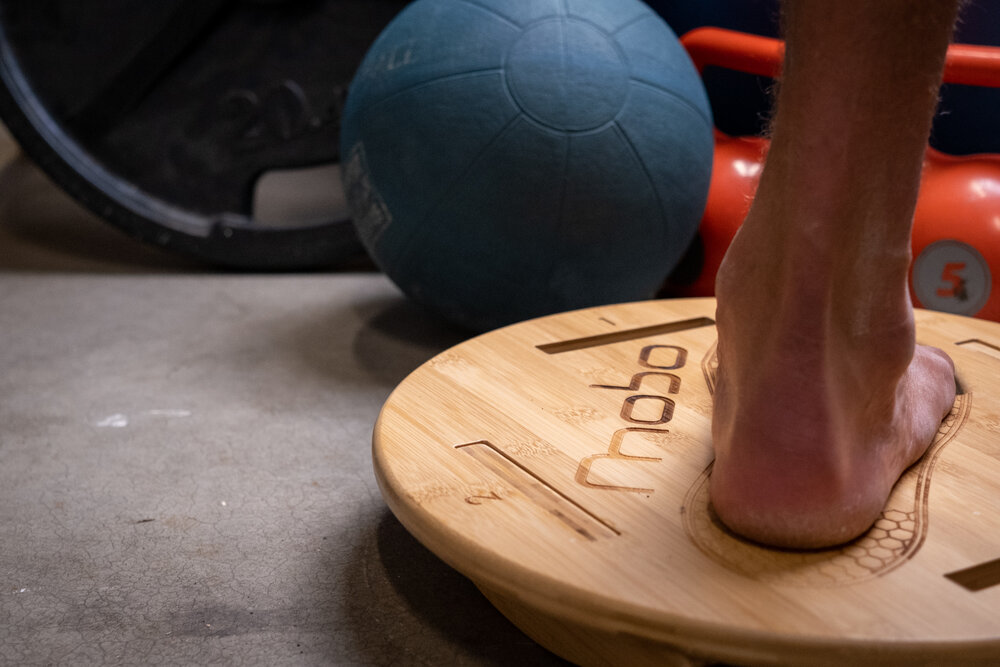


If you have been dealing with aches and pains on the inside of your shin, it’s time to stop chasing your symptoms and fix the cause. “Shin splints” is the lay term used to describe what we in the medical community call “posterior tibial stress syndrome.” Let’s decode this term.
Muscles work by pulling two parts together. One lever is connected to another lever at a pivot point. During a bicep curl, your bicep contracts concentrically to pull your forearm up to your shoulder. A concentric contraction means the working muscle is shortening. When muscles work eccentrically, they move the levers by lengthening. An example of this is the “negative” phase of a lift, like when you lower the weight very slowly in that same bicep curl. Your bicep is working hard to lower the weight in a controlled manner. Eccentric control is actually very stressful to muscles. If you are like most runners, you might not be interested in bulking up your biceps, but you need to understand eccentric muscle contraction to solve your shin splint problem.
When the foot makes contact with the ground, it’s the job of the tibialis posterior muscle to work eccentrically to slow the foot as it twists down to the ground (pronation). In the case of the bicep curl, it’s easy to see how your rigid upper arm and your rigid forearm pivot on each other at your elbow. But the foot and ankle are more complex levers. The tibialis posterior attaches to your rigid shin (tibia) on one side, but on the other side there is not just one bone, but 26 individual bones that make up your foot. If that set of bones is well controlled, the tibialis posterior can work eccentrically to smoothly lower your foot to the ground. But if you show up with poor foot coordination and control, one end of the lever (your foot) is very unstable and likely to collapse. This compromises the tibialis posterior and its tendon. Muscles and tendons don’t like to be in lengthened positions where they are under more strain, become weaker, and can’t generate the eccentric control to guide your foot safely down to the floor. So your shin hurts.
What’s the Fix?
In this all-too-common scenario, the posterior tibialis is the victim, not the cause of the problem. It’s being asked to do more than it can handle, and more than it ever should. The poorly controlled foot is to blame. That bag of bones needs to become a stable platform. Foot control is 100 percent dependent on your forefoot control, specifically the big toe. With a stable big toe, your forefoot is stabilized, which creates a stable platform for your rearfoot, which means your tibialis posterior can stop trying to do the work of other muscles. Simply put, if you want to unload the muscles in your shins, you need to improve the control and coordination in your feet. To learn more about this and other problems that plague runners, please check out our founder’s book Running Rewired. But if you want to start improving your foot control now, MOBO is the tool to bring your foot up to speed and build a strong and stable foot. Get yours, hit the exercises tab above, and get to work on a better you.
Check out more info on my websites https://anathletesbody.com/ and https://www.moboboard.com/

0

0
Comments :